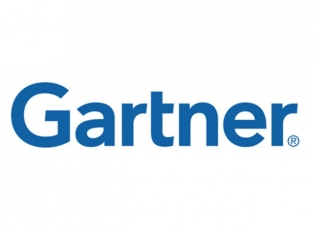Growth in PC market for first time in 7 years – Gartner
By Staff Writer 14 January 2020 | Categories: news
For the past few years the PC market has been in steady decline, but if ICT research company Gartner is to be believe it might be in a temporary recovery mode. After seven years of consecutive decline the global market provided a glimmer of hope, with worldwide PC shipments growing by 2.3% in fourth quarter of 2019, up 0.6% for the year.
Worldwide PC shipments totalled 70.6 million units in Q4 of 2019, a 2.3% increase from the same time in 2018, according to preliminary results by Gartner. For the year, 2019 PC shipments surpassed 261 million units, showing 0.6% growth from 2018.
“The PC market experienced growth for the first time since 2011, driven by vibrant business demand for Windows 10 upgrades, particularly in the US, EMEA and Japan,” said Mikako Kitagawa, senior principal analyst at Gartner. “We expect this growth to continue through this year even after Windows 7 support comes to an end this month, as many businesses in emerging regions such as China, Eurasia and the emerging Asia/Pacific have not yet upgraded.”
“Contrasted against the ongoing weakness in consumer PC demand, business PC demand has led to unit growth in five of the last seven quarters,” said Kitagawa. “The ongoing Intel CPU shortage, which began mid-last year, became a major issue again on PC delivery to enterprise customers by the top three vendors. Without this shortage, shipments would have grown faster than the reported results.”
Despite these chip constraints, the top three vendors increased their combined market share through 2019 to the highest level since Gartner began tracking PC data. Lenovo, HP Inc. and Dell accounted for nearly 65% of PC shipments in the fourth quarter of 2019, up from just more than 61% in the fourth quarter of 2018 (see Table 1).
Lenovo maintained its No. 1 position in the worldwide PC market and widened its share over HP Inc. With the exception of the Asia/Pacific, Lenovo recorded year-over-year growth in all regions. In the US alone, Lenovo’s desktop PC shipments rose more than 30% compared with a year ago.
HP Inc. experienced its third quarter in a row of year-over-year shipment growth, and kept its top position in the US, EMEA and Latin America. However, it is facing aggressive competition from Lenovo and Dell. Dell finished the fourth quarter of 2019 with a record number of shipments, exceeding 12 million units for the first time since Gartner started tracking PC shipments. Dell’s shipments grew year-over-year in all regions at a much higher rate compared with the regional average, due in large part to its particularly strong desktop PC growth.
The US PC market grew 4.6% in the fourth quarter of 2019 with double-digit growth of desktop PCs for the first time since 2014 (see Table 2). Only two of the top vendors experienced a decline in US PC shipments, compared with four in the fourth quarter of 2018.
“The fourth quarter is typically a strong buying season for small and midsize businesses (SMBs) that want to maximise their spending before the tax year ends,” said Kitagawa. “The relatively stable economic conditions in the U.S. compared with previous quarters, coupled with the end of Windows 7 support, also loosened up spending on PCs.”
PC shipments in EMEA increased 3.6% year over year to 21 million units, with the fourth quarter of 2019 marking the second consecutive quarter of shipment growth as regional demand improves. In Western Europe, the required Windows 10 upgrade outweighed any uncertainty surrounding Brexit. However, negative consumer confidence in the UK translated into the delay of many PC purchases.
The Asia/Pacific PC market totalled 22 million units in the fourth quarter of 2019, a 6.1% decline from the fourth quarter of 2018. This marks the region’s fifth straight quarter of decline. The decline can be attributed to weaker PC spending in China, the country that represents around 60% of the total Asia/Pacific PC market, over political and trade concerns.
Modest PC market growth in the full year of 2019
Worldwide PC shipments totalled 261.2 million units in 2019, a 0.6% increase from 2018 (see Table 3). This was the first time in seven years that the global PC market experienced growth.
“Geographically, Japan’s annual growth led the overall market’s growth,” said Kitagawa. “As for vendor performance, the top three vendors grew faster than the market itself, gaining a combined market share of 63.1% in 2019 compared with 60.2% in 2018. Their focus on the business market and more favourable allocations within the current CPU constraints served them well throughout the year.
Looking ahead, Gartner predicts a continuous decline in the consumer PC market over the next five years. "Product innovation is one of the key factors that will enable the overall PC market to maintain sustainable growth. We’ve already started to see this through the ‘foldable laptops’ introduced at CES this past week along with initiatives that make PCs as easy as smartphones by allowing users to always be connected and ensuring a worry-free battery life. Such innovations that change user behaviour and create new product segments are something to keep an eye on in 2020 and beyond,” concluded Kitagawa.
Most Read Articles

Have Your Say
What new tech or developments are you most anticipating this year?



